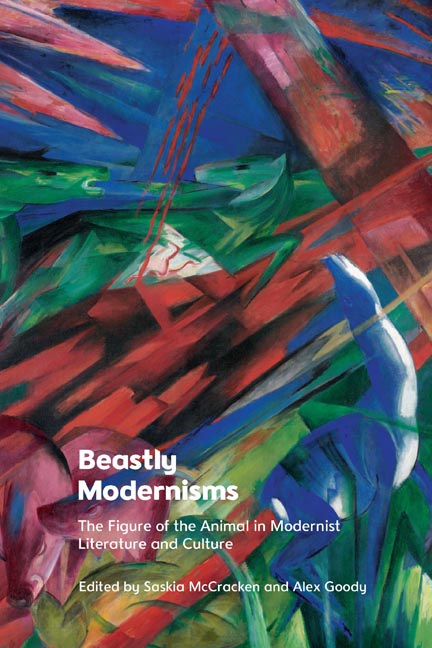Book contents
Introduction: Beastly Modernisms
Published online by Cambridge University Press: 21 October 2023
Summary
I still do not think La Somnambule the perfect title – Night Beast would be better except for that debased meaning now put on that nice word beast.
– Djuna Barnes to Emily Holmes ColemanNonhuman animals, both written and pictorial, form one of the many beastly connections between two singular modernists, Djuna Barnes and James Joyce. Joyce had moved to Paris from Zurich in July 1920, and in early 1922 Barnes was also visiting Paris, continuing her career as a journalist and working on the collection that would be published as A Book the following year. As a Greenwich Village expatriate, Barnes had a network of connections in Paris, and her first-hand knowledge of Ulysses (1922) and the recent Little Review obscenity trial gave her an entry to conversations with Joyce: she collated her early encounters with him into a piece entitled ‘A Portrait of a Man Who Is, At Present, One of the More Significant Figures in Literature’ and published in Vanity Fair in April 1922. Recalling their first meeting ‘Sitting in the cafe of the Deux Magots, that faces the little church of St. Germain des Pres’, Barnes’s gaze alights on Joyce’s waistcoat:
the most delightful waistcoat it has ever been my happiness to see. Purple with alternate doe and dog heads. The does, tiny scarlet tongues hanging out over blond lower lips, downed in a light wool, and the dogs no more ferocious or on the scent than any good animal who adheres to his master through the seven cycles of change. (Barnes 1922: 65)
This hunting waistcoat was a family heirloom – originally belonging to his great-grandfather, James Joyce – and, in ‘The Dead’, Joyce attires Gabriel in a version of it, ‘a waistcoat of purple tabinet, with little foxes’ heads upon it, lined with brown satin and having round mulberry buttons’ (Joyce 1993: 347). Joyce inherited the waistcoat from his father and wore it for special occasions (Jackson and Costello 1998: 17); it was presented to the James Joyce Museum at Sandycove by Samuel Beckett in the 1960s (Nicholson 2001: 295).
- Type
- Chapter
- Information
- Beastly ModernismsThe Figure of the Animal in Modernist Literature and Culture, pp. 1 - 20Publisher: Edinburgh University PressPrint publication year: 2023



